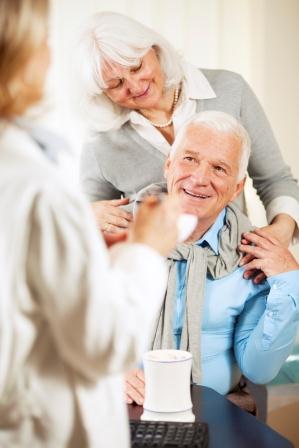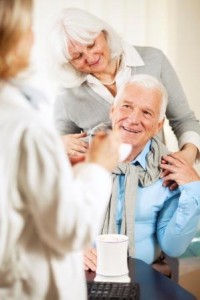
As a patient advocate for more than a decade, I felt  exhilarated when I first read, Safety is Personal, the Report on Consumer Engagement in Patient Safety published by the National Patient Safety Foundation’s Lucian Leape Institute. It gets to the point quickly with its call to action: Engage patients and families as partners. While my own experiences and common sense had led me to believe that I could be a positive force in my loved ones’ care, that’s not always been the “message” I’ve gotten from healthcare providers.
exhilarated when I first read, Safety is Personal, the Report on Consumer Engagement in Patient Safety published by the National Patient Safety Foundation’s Lucian Leape Institute. It gets to the point quickly with its call to action: Engage patients and families as partners. While my own experiences and common sense had led me to believe that I could be a positive force in my loved ones’ care, that’s not always been the “message” I’ve gotten from healthcare providers.
Lessons from the Past
A type-A personality and part of a generation known for challenging the “system,” I recall feeling shut out and frustrated by my early encounters with the healthcare system. I never felt more powerless than when I watched my mother-in-law go from being active to a bed-ridden woman on dialysis as a result of a sequence of missteps during hospitalization and poor communication at each touch point. Conversations when she was first discharged from the hospital focused more on where do we send her, than her plan of care. Naively, my family and I felt secure in the knowledge that a visiting nurse would follow up with her, particularly since we lived on the opposite side of town. With my sister-in-law also checking in on her daily, we thought she’d be fine. Little did we know, mother would refuse certain tests and not fully comply with prescribed medications.
Communication: Rx for Safer Care
We learned some huge lessons there. Though I can’t undo the past, those experiences served as a wake-up call. I’m now vigilant and an active participant in my family’s care, though I’m sometimes met by a resistant or indignant clinician. I’m careful to keep other family members in the loop though it can be challenging at times being spread across several states.
I’ve come to recognize communication is essential … with and between caregivers, and among family members as well. Now with publication of the Lucian Leape report, I feel validated. The report has made it very clear that for the safest care patients and families need to be involved. To be an effective partner, at a minimum, we must:
- Ask questions about the risks/benefits of recommendations (until we understand).
- Never go alone to the doctor or hospital, but take a family member or advocate.
- Know our medications by name, and why and how to take them.
- Understand the plan of action for our care.
- Repeat back to our clinicians what we think they told us.
- Get recommended lab tests done before our visits.
- Determine who is in charge of our care.
Checklist for Effective Partnering
Of course, I’m convinced I have a much larger role I can play. The consumer engagement report outlines a comprehensive checklist for healthcare leaders, clinicians and policy makers. To that, I want to add my own checklist:
- Respect Me: Listen to me. Leave arrogance at the door and welcome me for the knowledge and perspective I can provide.
- Inform Me: Talk to me in plain, yet specific language. Share the plan of care, the prognosis.Level-set my expectations.
- Empower Me: Advise me on what I should watch for, what I can do in terms specific to my or my family member’s condition and limitations. Give me tools to be effective. Point me to resources.
- Partner with Me: As an advocate for my parents and my husband, I’ve observed and experienced some of the best and the worst of care delivery. Let me play a greater role in shaping the patient and family experience.
If you’ve not already secured a copy of Safety is Personal, Partnering with Patients and Families for the Safest Care, you can download your complimentary copy here.





2 Comments
I don’t think that’s the right link for Safety is Personal.
Thanks, Marilyn! The hyperlink was corrected.